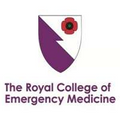BOASt - Early Management of the Paediatric Forearm Fracture




Date Published: May 2021
Last Updated: May 2021
Background and justification
The most common site of fractures in children is the forearm. Casting is the gold standard of care for most fractures as children have a capacity to remodel following fracture union, permitting the bones to heal with a greater degree of angulation or displacement than could be accepted in an adult without long-term consequences. The wrist is more tolerant of angulation and displacement than the forearm shaft. For the majority of forearm fractures that exceed remodelling potential, early closed reduction by manipulation, avoiding the need for admission and general anaesthesia is the treatment of choice.
Inclusions:
Skeletally immature patients seen in Emergency Departments following an angulated (but not off-ended) forearm fracture.Exclusions:
Fractures that following interdisciplinary discussion require management in the operating theatre due to either patient or injury related factors.Standards for Practice
- All units managing children’s forearm fractures should have protocols to enable early, definitive manipulation and casting without necessitating admission. This protocol should specifically address processes around procedural analgesia and sedation as well as the timely response to manipulation.
- A documented assessment of the limb, performed on presentation, should include the status of the radial pulse, digital capillary refill time and the individual function of the radial, median and ulnar nerves.
- At the time of initial assessment, effective analgesia should be administered. Pain scores should be recorded frequently, to ensure that pain relief is maintained throughout.
- Orthogonal X-rays should be available to allow proper diagnosis and planning.
- The child, if competent, carers and clinicians must agree with the intervention. Formal consent should be documented according to local protocols.
- Manipulation of children’s fractures should occur in a location suitable to ensure safe practice with monitoring and appropriate facilities to afford effective treatment and casting, managing complications of and recovery from medication.
- Manipulation of a child’s forearm fracture should be performed by competent orthopaedic practitioners, as defined by local protocols.
- Manipulation of a child’s forearm fracture should be followed by orthogonal X-rays.
- Before discharge a recorded assessment of the neurovascular status of the limb should be repeated as described in standard two.
- Oral analgesia to take home and dedicated information leaflets, that include red flag symptoms and contact details, should be provided. Prior to discharge, a fracture clinic appointment should be made to occur within 7 days of injury.
- A documented review of the case and images by a consultant orthopaedic surgeon should occur within 48 hours of injury.
- Regular multi-disciplinary audit against the above standards should be undertaken, which should include monitoring of the rate of admission for further procedures on the limb.
